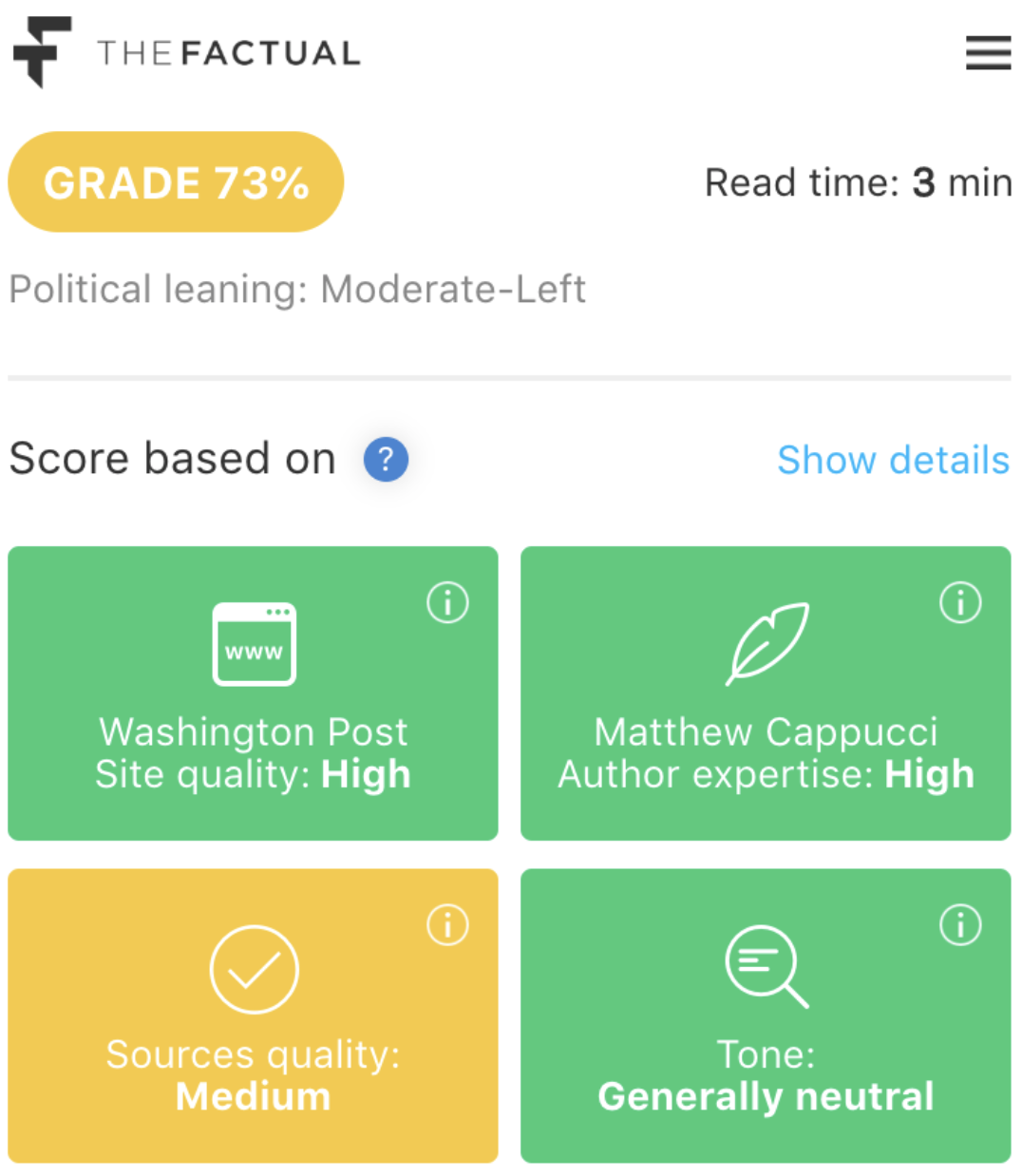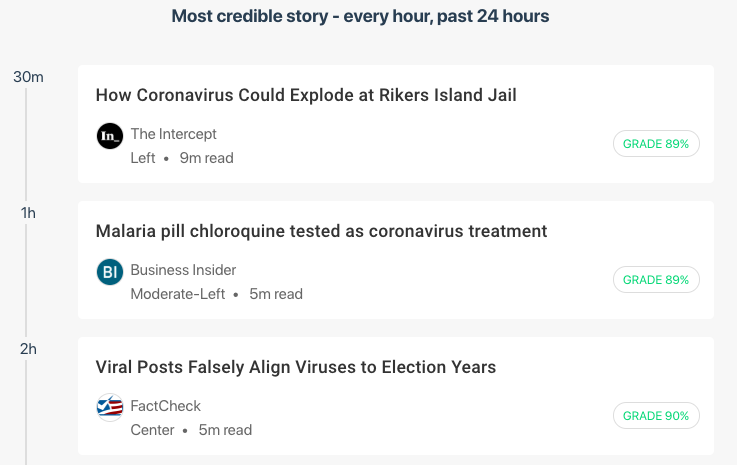With the COVID-19 pandemic affecting every aspect of our lives, we are all searching for the most up-to-date and credible news for clarity. That’s why, at The Factual, we’ve put together a COVID-19 news timeline that uses an algorithm to curate the most credible article, by the hour, from hundreds of reputable news sources.
The timeline automatically updates every hour with the most current, credible news.
Every day, over 600 articles are published on the virus, including clickbait news and hearsay. This makes it exceedingly difficult to find the most credible and useful stories. That’s why The Factual uses an algorithm to transparently rate the credibility of individual articles based on four criteria: site reputation, author expertise, evidence cited, and neutral tone of reporting. Together, these criteria determine an overall credibility score out of 100%. Articles ranked 75% or higher are deemed credible.
Since we pull information from hundreds of reputable news sources, each article represents the very best in terms of information as we know it. Here is a breakdown of how an article’s credibility is determined:
 Each article is ranked by the four criteria above.
Each article is ranked by the four criteria above.
Green represents high quality and yellow represents moderate quality. Very rarely will we recommend an article with red (low quality) in any of the categories. When these four factors are combined, it creates a credibility score. For further analysis, please visit our How It Works webpage.
We rely on an algorithm to do this initial determination because it takes human bias out of the equation while also maximizing efficiency. For example, if I were to recommend articles on coronavirus to family, my initial inkling would be to search news sources that I like and whose views I align with. I would not have the capacity to search hundreds of news sources from a variety of viewpoints. An algorithm can objectively process information more efficiently and churn out a rating system that is more accurate than my own judgement. Plus, it works around the clock.
In addition to the active timeline, our webpage features data surrounding how many articles have been published since the start of the coronavirus crisis. This is a useful tool for various reasons. It can determine how the media has both reflected and impacted our understanding of the virus. It can also be juxtaposed against government action to determine whether or not we acted in a timely manner. Plus, it tracks trends — as the virus expands, contracts, or plateaus, media coverage may correlate.
The timeline also tracks the volume of articles published every day.
For the best articles on a range of topics with a special COVID-19 feature, as well insights by our data science team, sign up for our daily newsletter.



